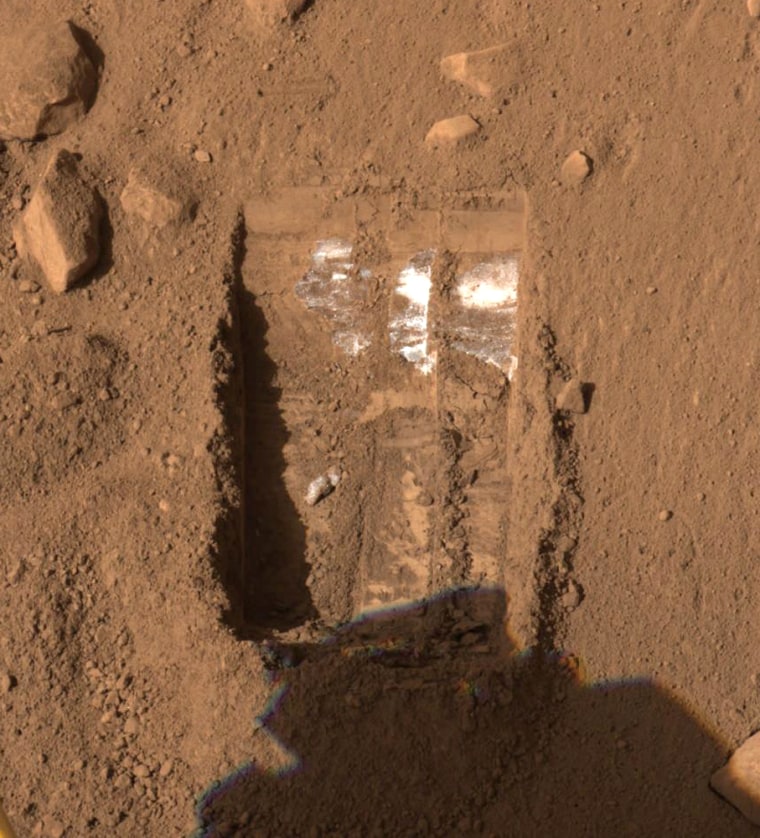Is the white stuff in the Martian soil ice or salt?
That's the question bedeviling scientists in the three weeks since the Phoenix lander began digging into Mars' north pole region to study whether the arctic could be habitable.
Shallow trenches excavated by the lander's backhoe-like robotic arm have turned up specks and at times even stripes of mysterious white material mixed in with the clumpy, reddish dirt.
Phoenix merged two previously dug trenches over the weekend into a single pit measuring a little over 1 foot (30 centimeters) long and 3 inches (8 centimeters) deep. The new trench was excavated at the edge of a polygon-shaped pattern in the ground that may have been formed by the seasonal melting of underground ice.
New photos showed the exposed bright substance present only in the top part of the trench, suggesting it's not uniform throughout the excavation site. Phoenix will take images of the trench dubbed "Dodo-Goldilocks" over the next few days to record any changes. If it's ice, scientists expect it to sublimate — or go from solid to gas, bypassing the liquid stage.
"We think it's ice. But again, until we can see it disappear ... we're not guaranteed yet," mission scientist Ray Arvidson of Washington University in St. Louis said Monday.
Even if it's not ice, the discovery of salt would also be significant because it's normally formed when water evaporates in the soil.
Preliminary results from a bake-and-sniff experiment at low temperatures failed to turn up any trace of water or ice in the scoopful of soil that was delivered to the lander's test oven last week. Scientists planned to heat the soil again this week to up to 1,800 degrees, said William Boynton of the University of Arizona in Tucson.
Phoenix landed in the Martian arctic plains on May 25 on a three-month, $420 million mission to study whether the polar environment could be favorable for primitive life to emerge. The lander's main job is to dig into an ice layer believed to exist a few inches from the surface.
The project is led by the University of Arizona and managed by NASA's Jet Propulsion Laboratory. The lander was built by Lockheed Martin Corp.
